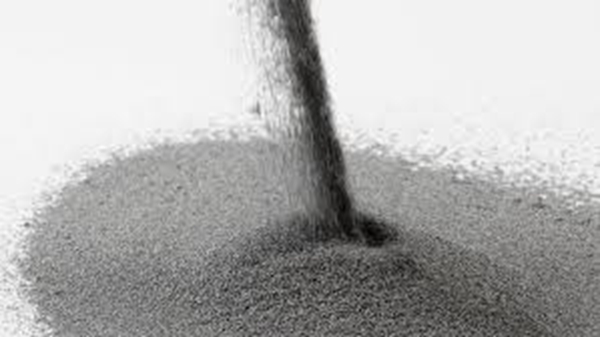3D printing technology is an emerging technology that is rapidly developing in the manufacturing industry. It is called “manufacturing technology with industrial revolution significance” and has become an effective means of modern model, mold and parts manufacturing in aerospace, automobile and motorcycle , home appliances, biomedical and other fields have been applied, and also occupy a unique position in engineering and teaching research. 3D printing is based on the computer 3D design model. It is a software layered discrete and CNC forming system. It uses a laser beam, hot melt nozzle, etc. to make metal powder, ceramic powder, plastic, cell tissue, sand, etc. The material is layer-by-layer bonded and finally superposed to form a solid product. The raw materials for 3D printing are special and must be liquefied, powdered, silked, recombined after printing, and have acceptable physicochemical properties.

3D printing metal powder
3D printing metal powder as a metal part The most important part of the 3D printing industry chain is also the greatest value. At the "2013 World 3D Printing Technology Industry Conference", the world's leading experts in the 3D printing industry gave a clear definition of 3D printed metal powder, which refers to a group of metal particles smaller than 1mm in size. It includes single metal powder, an alloy powder, and certain refractory compound powders having metallic properties. Currently, 3D printed metal powder materials include cobalt-chromium alloys, stainless steel, industrial steel, bronze alloys, titanium alloys, and nickel-aluminum alloys. However, in addition to good plasticity, 3D printing metal powder must meet the requirements of fine powder particle size, narrow particle size distribution, high sphericity, good fluidity and high bulk density.
The metal powder preparation process
At present, the powder preparation method can be mainly divided into a reduction method, an electrolysis method, a carbonyl decomposition method, a grinding method, an atomization method, and the like according to a preparation process. Among them, the powder produced by the reduction method, the electrolysis method and the atomization method is widely used as a raw material in the powder metallurgy industry. However, the electrolysis method and the reduction method are limited to the production of elemental metal powder, and these methods are not applicable to the alloy powder.

Water atomization
In atomized milling production, water atomization is one of the inexpensive production methods. Because the atomized medium water is not only cheap and easy to obtain, but also excellent in atomization efficiency. At present, the domestic water atomization method is mainly used for producing steel powder, carcass powder for diamond tools, pre-alloyed powder for oil-bearing, hard surface technical powder, and iron-based and nickel-based magnetic powder. However, since the specific heat capacity of water is much larger than that of gas, during the atomization process, the broken metal droplets become irregular due to solidification too fast, and the sphericity of the powder is affected. Other metals or alloys with high activity react with water and increase the oxygen content of the powder due to contact with water during atomization. These problems limit the application of water atomization in the preparation of metal powders with high sphericity and low oxygen content.
Gas atomization
The gas atomization is one of the main methods for producing metal and alloy powders. The basic principle of gas atomization is the process of breaking a liquid metal stream into small droplets and solidifying it into a powder with a high-velocity gas stream. Because of its high purity, low oxygen content, controllable powder particle size, low production cost and high sphericity, the powder has become the main development direction of high performance and special alloy powder preparation technology.
Laminar atomization
Laminar atomization technology was proposed by Nanoval, Germany, etc., which has made significant improvements to conventional nozzles. Another advantage of this process is low gas consumption, significant economic benefits, and is suitable for large production of most metal powders. The disadvantage is that the technical control is difficult, the atomization process is unstable, and the output is small.
TRUNNANO (Luoyang Trunnano Tech Co., Ltd ) is a professional 3D printing metal powder manufacturer with over 12 years experience in chemical products research and development. If you are looking for high quality 3D printing metal powder, please feel free to contact us and send an inquiry.

